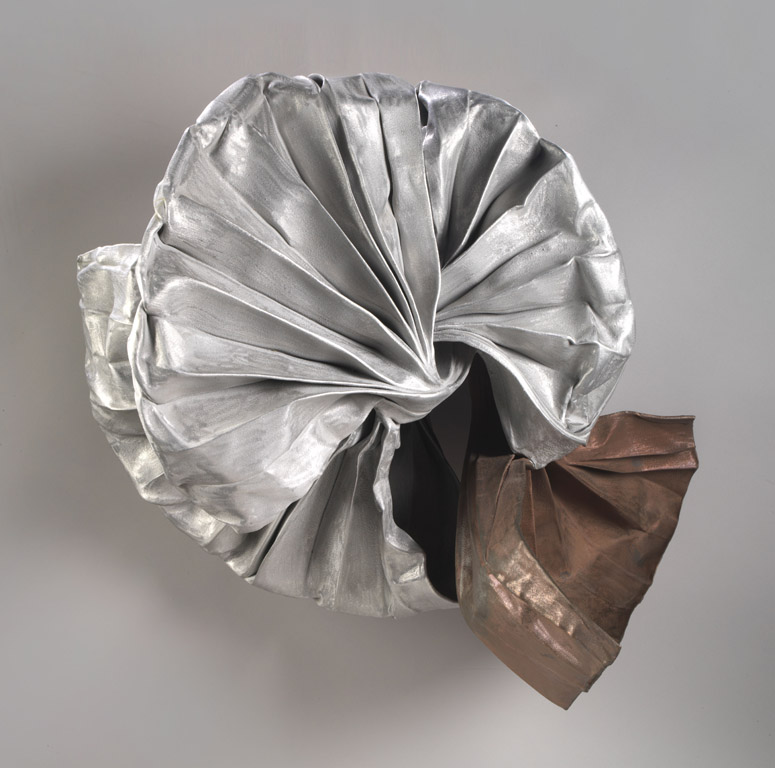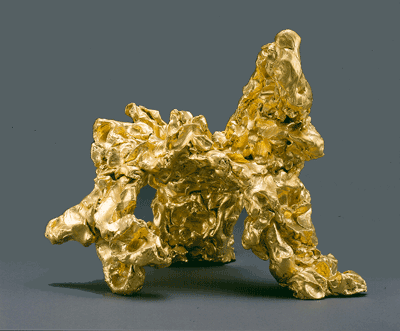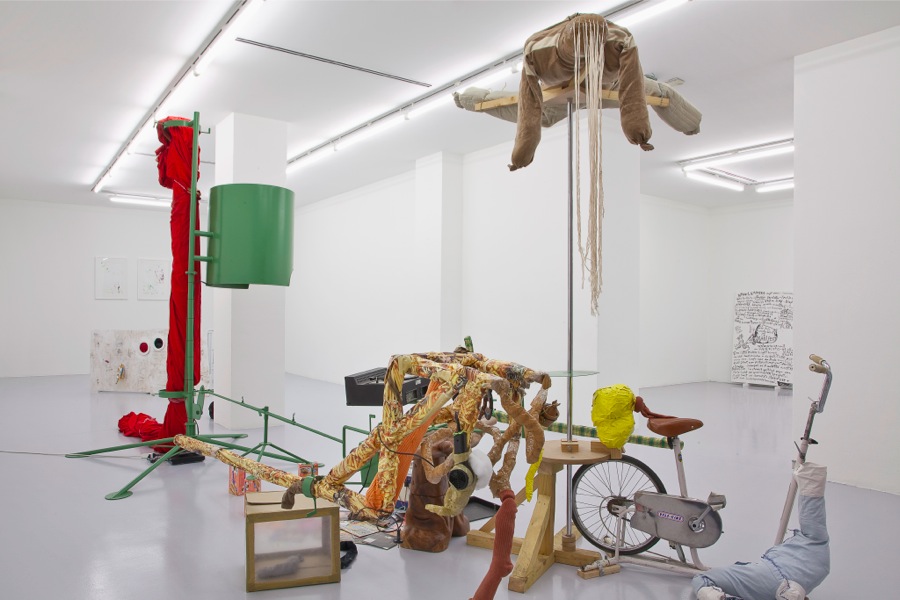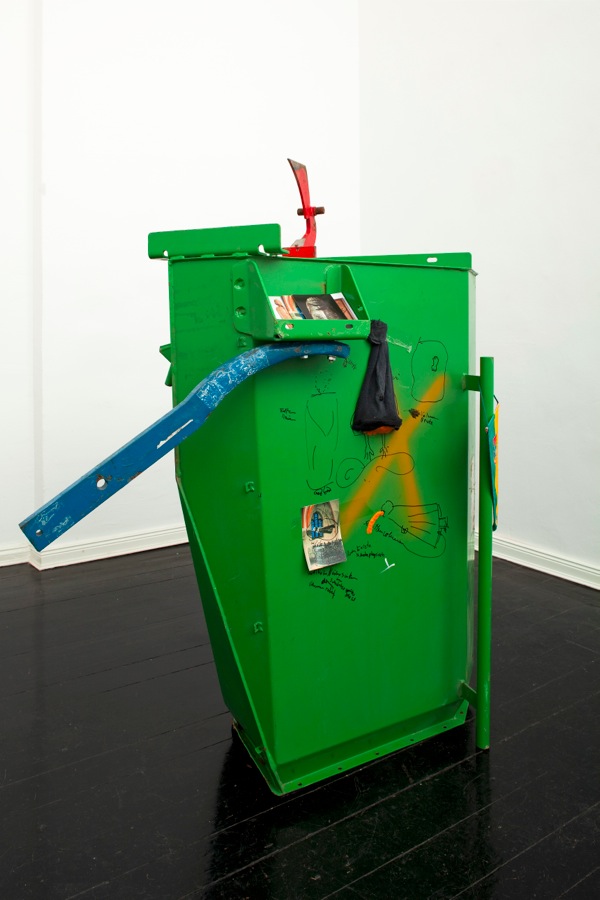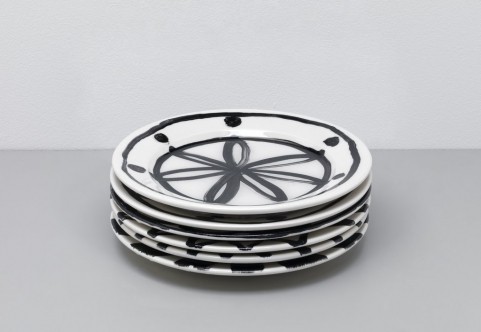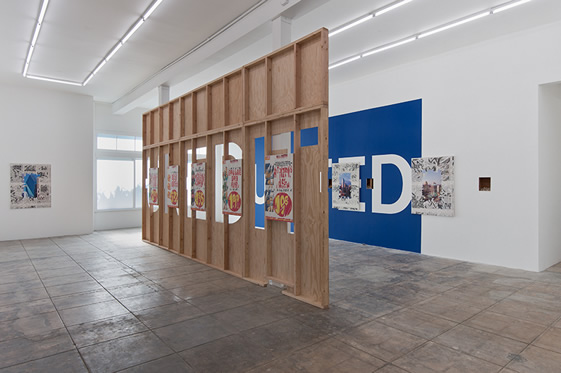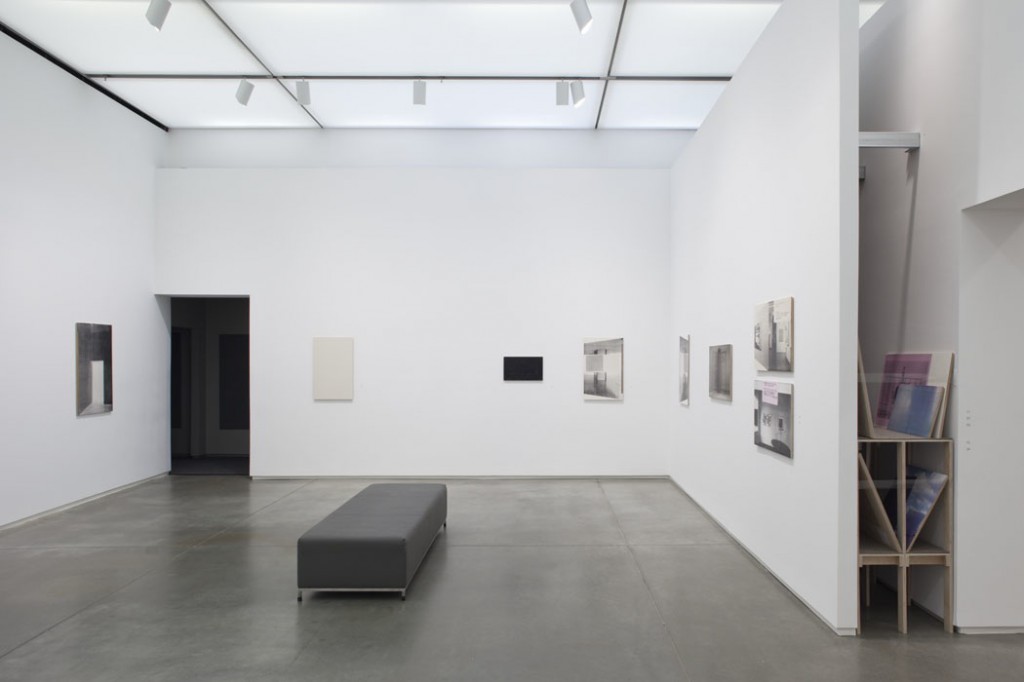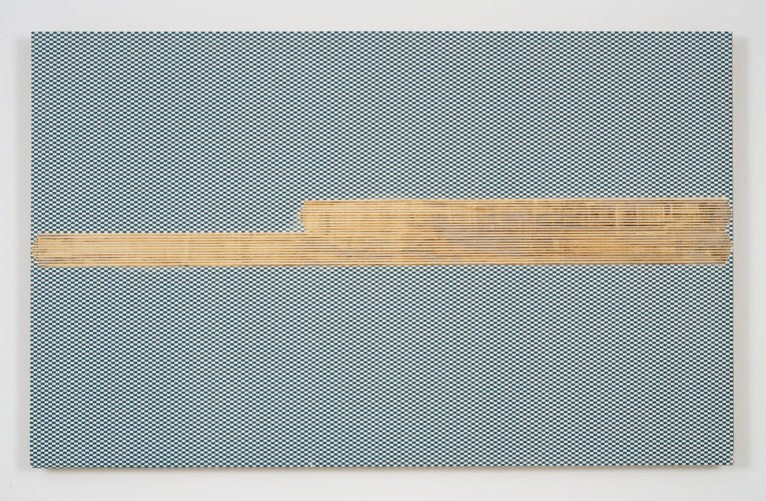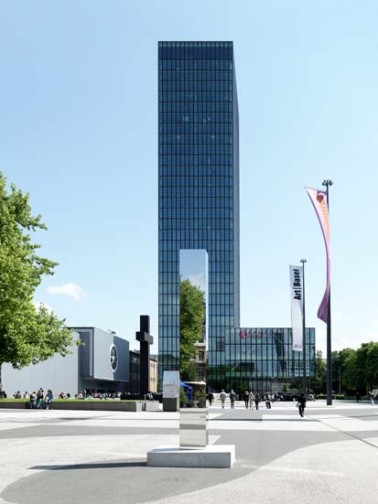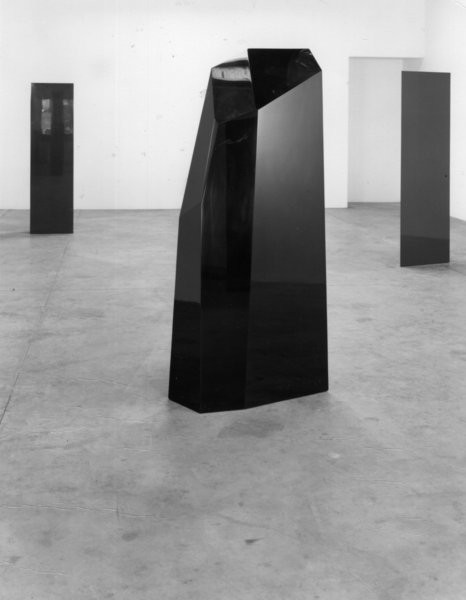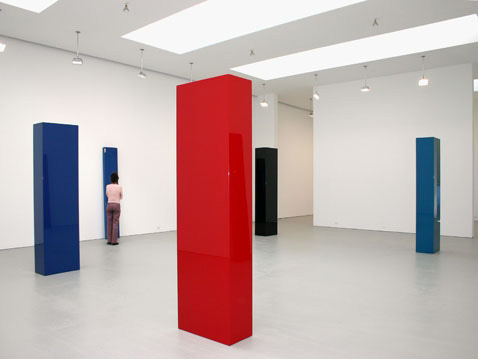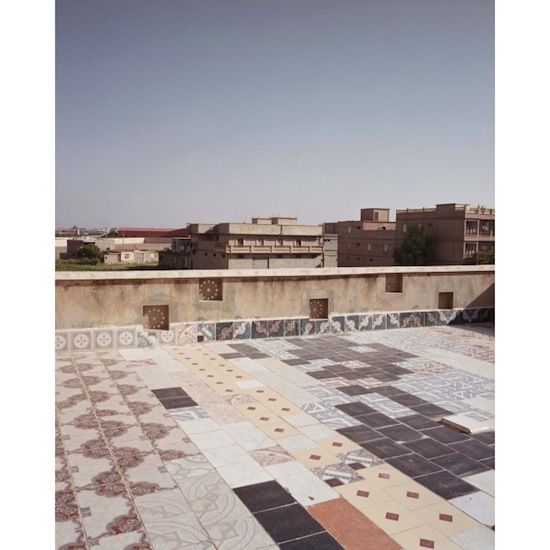Lydia Benglis, Merak, Sinc and Copper, 1990 and Ghost Dance, Bronze and gold leaf, 1992
Lynda Benglis (born October 25, 1941) is an American sculptor known for her wax paintings and poured latex sculptures. After earning a BFA from Newcomb College in 1964, Benglis moved to New York, where she lives and works today. Benglis’ work is noted for an unusual blend of organic imagery and confrontation with newer media incorporating influences such as Barnett Newman and Andy Warhol. Her early work used materials such as beeswax before moving on to large polyurethane pieces in the 1970s and later to gold-leaf, zinc, and aluminum. The validity of much of her work was questioned until the 1980s due to its use of sensuality and physicality.
Like other artists such as Yves Klein, Benglis’ mimicked Jackson Pollock’s flinging and dripping methods of painting. Works such as Fallen Painting (1968) inform the approach with a feminist perspective. For this work, Benglis smeared Day-Glo paint across the gallery floor invoking “the depravity of the ‘fallen’ woman” or, from a feminist perspective, a “prone victim of phallic male desire”. These brightly colored organic floor pieces were intended to disrupt the male-dominated minimalism movement with their suggestiveness and openness. In 1971, Benglis began to collaborate with Robert Morris, creating Benglis’ video Mumble (1972) and Morris’ Exchange (1973). Benglis produced several videos during the 1970s in which she explored themes of self-representation and female identity.
Like other female artists, she was attracted by the newness of a medium that was uncorrupted by male artists. The structure of the new medium itself played an important role in addressing questions about female identity in relation to art, pop culture, and dominant feminism movements at the time. Benglis produced several videos during the 1970s in which she explored themes of self-representation and female identity.
Benglis felt underrepresented in the male-run artistic community and so confronted the “male ethos” in a series of magazine advertisements satirizing pin-up girls and Hollywood actresses. Benglis chose the medium of magazine advertisements as it allowed her complete control of an image rather than allowing it to be run through critical commentary. This series culminated with a particularly controversial one in the November 1974 issue of Artforum featuring Benglis aggressively posed with a large latex dildo and wearing only a pair ofsunglasses promoting an upcoming exhibition of hers at the Paula Cooper Gallery. One of her original ideas for the advertisement had been for her and collaborative partner Robert Morris to work together as a double pin-up, but eventually found that using a double dildo was sufficient as she found it to be “both male and female.”
